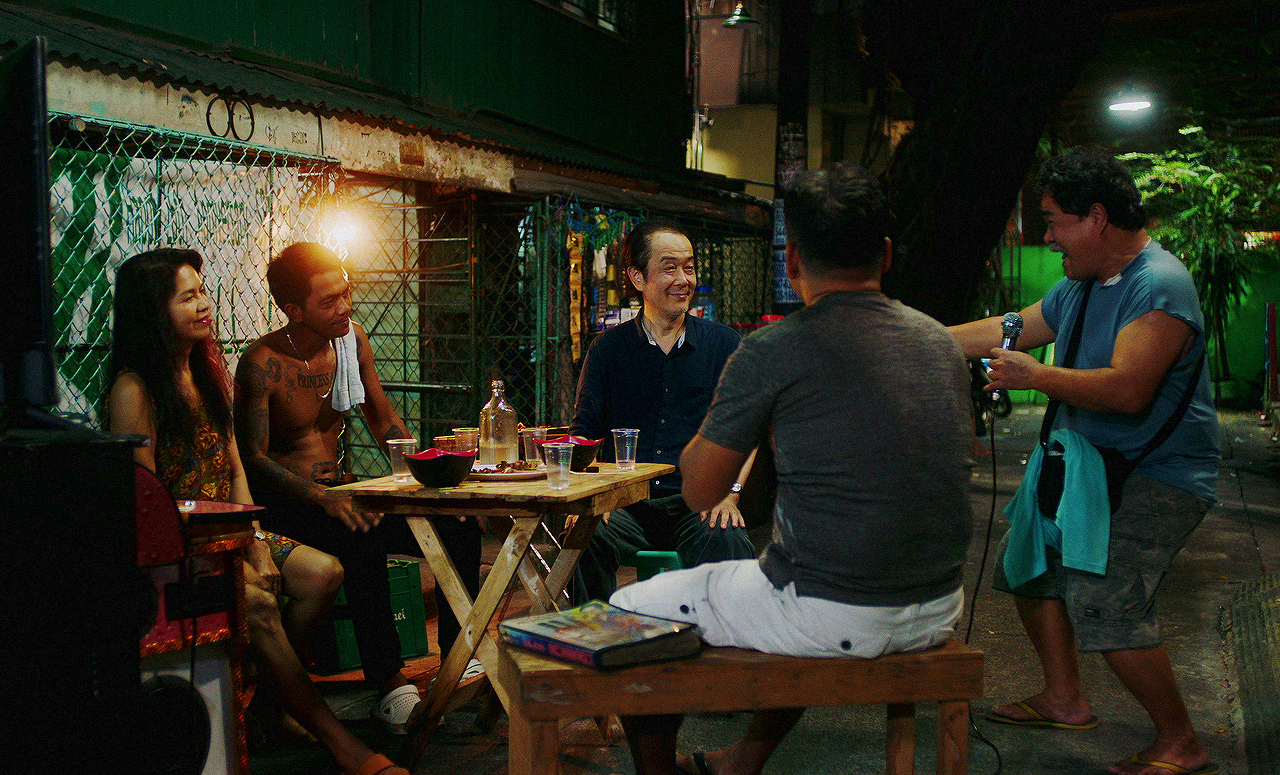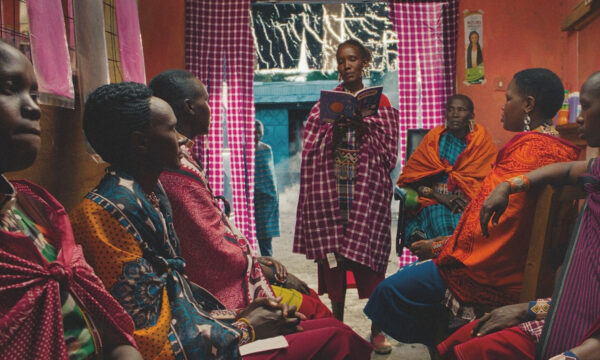Diamonds in the Sand

A quietly introspective feature that dissects themes of happiness, mortality and privilege, Diamonds in the Sand asks what it means to live a fulfilled life. It follows Lily Franky as Yoji, a silent Japanese man simply coasting through life and work. As he frequents the nursing home where his mother resides, he grows closer to her Filipino caregiver, Minerva. Two deaths disrupt Yoji’s life, one being his neighbour, Mr Suzuki, whose rotting body Yoji finds in the apartment above him. This incident exposes the “lonely death” phenomenon in Japan: people dying alone in their homes, leaving a significant amount of time before their bodies are discovered. Not long after, Yoji’s mother also passes, leaving him lost and listless. Listening to Minerva and her fellow Filipino workers – their loud, bustling descriptions of life in the Philippines – Yoji decides to take off to the country.
Death and mortality haunt the narrative through parallelism and foreshadowing. Living in the same building, the layout of Yoji’s home is similar to that of Mr Suzuki’s. Yoji, standing in the middle of Mr Suzuki’s messy and wrecked apartment, provides an uncanny glimpse of his possible future. Diamonds in the Sand has an affinity for off-screen deaths, but it never shies away from showcasing its brutal aftermath. It makes a point to show the morbid scenes of blood spills and stains, and bodies decaying. These themes of death and mortality evoke feelings of sorrowful lament, driven by the heavy use of strings in the score.
Another important point of discussion is that of human connection. The script has plenty of lingering, unfinished conversations, with the language barrier resulting in humorous miscommunications and awkward misunderstandings. This, alongside the cultural differences between Yoji and the Filipinos, amplifies the strength of friendship. It elucidates how verbal barriers are dismantled through kind gestures such as offering food. This aspect of human connection is well-visualised through symmetry. Yoji is constantly framed sitting beside or across somebody, highlighting the importance of companionship. When the piece diverts from this familiar image, specifically the scene in which he and Minerva argue, there’s an undertone of unease and severe emptiness. This is further enhanced by the cinematography’s penchant for open spaces, further intensifying this sense of isolation.
Diamonds in the Sand is nuanced, not only displaying the beauty in the Philippines and the kindness of the people Yoji encounters, but also its poverty and violence. Colour plays a big role in conveying Yoji’s rose-tinted perspective. In the opening scenes, everything is muted and composed of neutral colours, which are further dulled by the wash of bright lights. It all looks lifeless and desaturated. As soon as he arrives in the Philippines, the tones become warm and vibrant. To Yoji, the Philippines is a place to vacation and escape to. For the residents, this colourful life is their reality. The sharp intensity of the colours becomes more pronounced and volatile when it’s used to depict blood and death. Meanwhile, reflections on mirrors and windows further symbolise the rose-coloured glass through which Yoji sees the Philippines.
Simply heartbreaking, Diamonds in the Sand marvels in the quiet laughter of its characters and the small interactions with deep sentimental value. Franky is supported by an understatedly brilliant cast in Maria Isabel Lopez as Minerva, Charlie Dizon as her daughter, Angel, and Soliman Cruz as the charming Toto. Janus Victoria’s feature is poignant, exploring its themes with great care, and disarms the audience in a surprisingly tragic yet endearing manner.
Mae Trumata
Diamonds in the Sand does not have a release date yet.
Read more reviews from our London Film Festival coverage here.
For further information about the event, visit the London Film Festival website here.
Watch the trailer for Diamonds in the Sand here:



























Facebook
Twitter
Instagram
YouTube
RSS